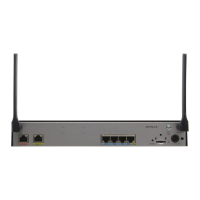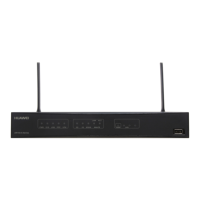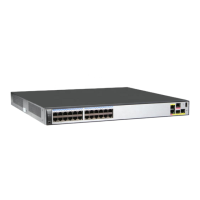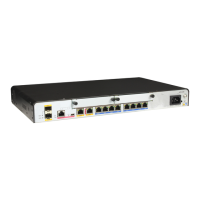bridge 1
#
interface Ethernet2/0/1
port link-type access
port default vlan 11
#
interface Ethernet2/0/2
port link-type access
port default vlan 11
#
interface GigabitEthernet3/0/0
ip address 3.1.1.1 255.255.255.0
#
interface Bridge-if1
ip address 1.1.1.3 255.255.255.0
#
return
2.8.3 Example for Configuring Remote Bridging
Configuring remote bridging allows LANs on the same network segment but in different
geographical locations to communicate with each other.
Networking Requirements
An enterprise has multiple departments in different locations. As business expands for the
enterprise, data communication is required between terminals within the same department and
between other departments located in different geological areas.
As shown in Figure 2-10, intermediate links are used to connect RouterA and RouterB, which
are located in different locations. Users 1 to 4 are on the same network segment. User 3 and User
4 are in a different location than User 1 and User 2. Configuring remote bridging allows User 1
and User 2 to communicate with User 3 and User 4.
Figure 2-10 Networking diagram of remote bridging
RouterBRouterA
GE3/0/0
GE3/0/0
Eth2/0/1
IP Core
Network
User 1
1.1.1.1/24
User 2
1.1.1.2/24
User 4
1.1.1.4/24
User 3
1.1.1.3/24
Eth2/0/2
Eth2/0/1
Eth2/0/2
Configuration Roadmap
The configuration roadmap is as follows:
1. Configure bridge groups on RouterA and RouterB.
Huawei AR3200 Series Enterprise Routers
Configuration Guide - LAN 2 Transparent Bridging Configuration
Issue 02 (2012-03-30) Huawei Proprietary and Confidential
Copyright © Huawei Technologies Co., Ltd.
67

